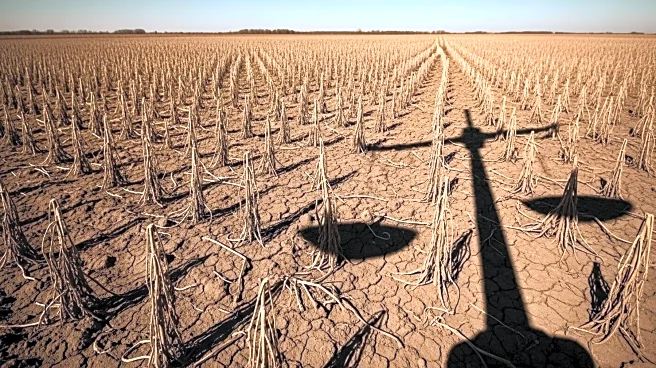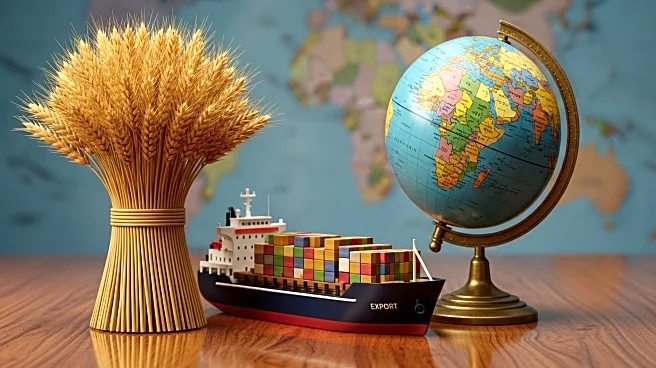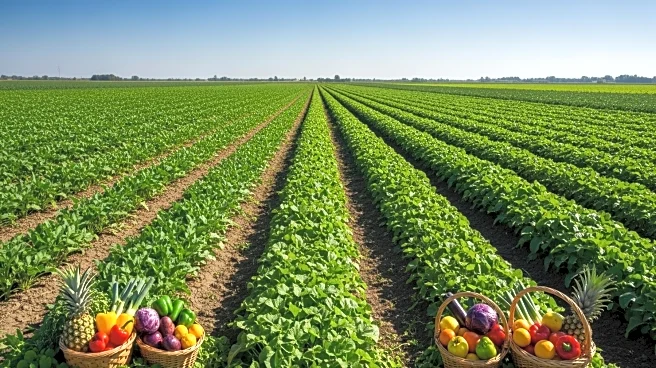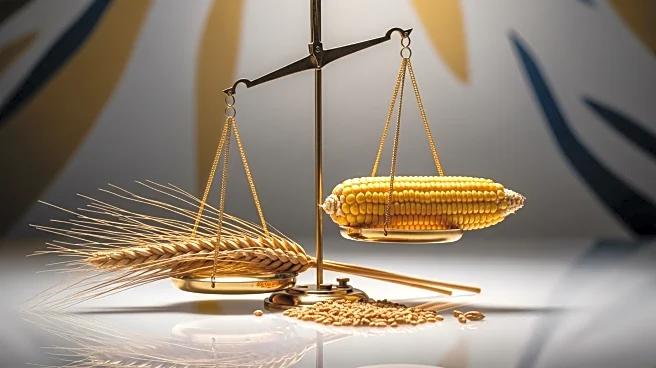What is the story about?
What's Happening?
The 2025 row crop harvest season in Lapeer County, Michigan, is underway amidst significant challenges for local, state, and national agricultural communities. Farmers are grappling with the adverse effects of tariffs and drought conditions, which have placed Lapeer County in a moderate drought status according to the U.S. Drought Monitor. A survey conducted by the National Corn Growers Association (NCGA) reveals that nearly half of the 1,034 farmers surveyed believe the U.S. is on the brink of a farm crisis, with 80% expressing concern about the farm economy. The survey highlights that farmers are considering delaying equipment purchases, reducing fertilizer applications, and seeking off-farm income due to declining crop profitability, lower prices, and elevated input costs. Despite projections of record corn crops by the U.S. Department of Agriculture (USDA), demand still trails production, potentially driving down corn prices further.
Why It's Important?
The current challenges facing farmers have significant implications for the U.S. agricultural sector and the broader economy. The decline in farm profitability and the potential farm crisis could lead to reduced agricultural output, affecting food supply chains and prices. Farmers' financial struggles may necessitate intervention from the USDA and Congress through grants or loans to maintain solvency. Agriculture is a critical economic driver in regions like Lapeer County, contributing substantially to Michigan's economy. The situation underscores the need for strategic policy measures to support farmers and stabilize the agricultural industry, which supports thousands of jobs in food processing, storage, and transportation.
What's Next?
Farmers and agricultural producers may need to adapt to the ongoing economic pressures by exploring alternative income sources and adjusting their operational strategies. The American Farm Bureau Federation has indicated that government intervention might be necessary to provide financial assistance to farmers. Stakeholders, including policymakers and agricultural organizations, will likely continue monitoring the situation to determine appropriate measures to support the industry. The USDA's projections and policy decisions will play a crucial role in shaping the future of the agricultural sector and addressing the challenges posed by tariffs, drought, and geopolitical factors.
Beyond the Headlines
The current agricultural challenges highlight broader issues such as the impact of global trade dynamics and climate change on local economies. The reliance on exports and international trade agreements underscores the vulnerability of the agricultural sector to geopolitical shifts. Additionally, the drought conditions emphasize the need for sustainable farming practices and climate resilience strategies to mitigate future risks. The situation calls for a reevaluation of agricultural policies to ensure long-term stability and support for farmers facing environmental and economic uncertainties.
AI Generated Content
Do you find this article useful?














